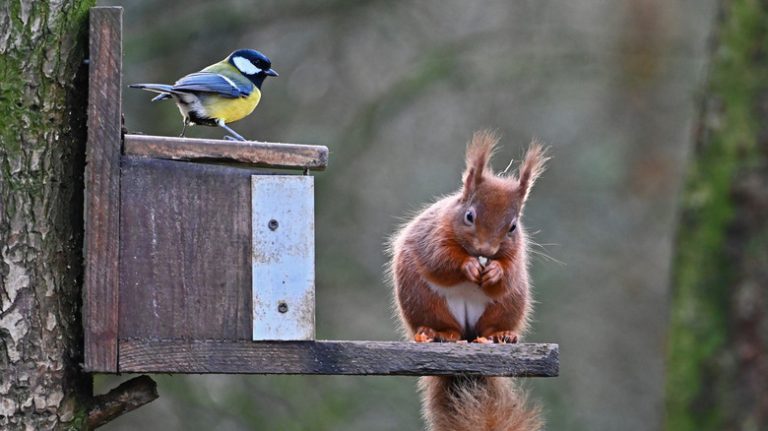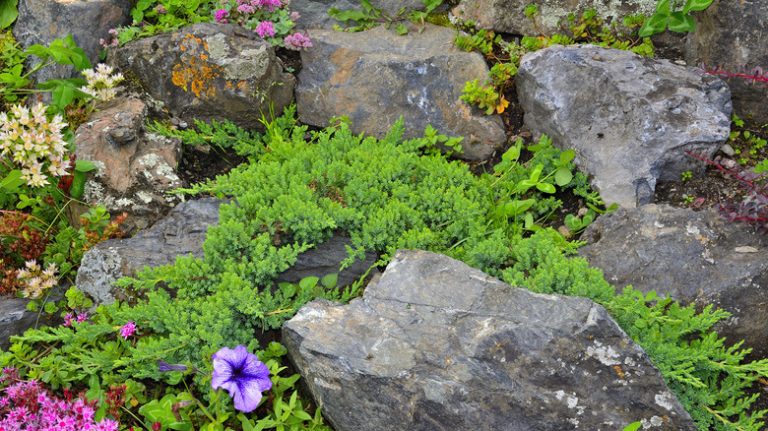Before your hostas appear with their dramatic flair, the spring landscape can seem a bit drab. That’s where spring-blooming bulbs come in. Planting bulbs near your hostas utilizes the available spring sun before deciduous trees leaf out, and these flowers appear over a long spring season: some before hosta shoots appear, some as their leaves are opening. The best spring bulbs to plant around your hostas include snowdrops, scilla, crocus, daffodils, grape hyacinths, Dutch hyacinths, English bluebells, and Spanish bluebells.
Increasing each year, it’s a good idea to divide your hostas every three years to keep them at a manageable size. Allowing the root system to get too big makes dividing them much more difficult. Dividing hostas loosens the soil and is a great opportunity to add some soil amendments to improve drainage and texture — and plant some more spring-blooming bulbs. All of the perennial bulbs featured here increase in number each year and can also be divided and replanted, except Dutch hyacinths which tend to increase much more slowly.
Spring bulbs and hostas are both excellent investments that bring rich rewards. I’ve been able to plant small amounts of spring-blooming bulbs and hostas for clients and, after several years, divide and replant them to provide greater variety across multiple gardens. This is a great money-saving way to increase spring beauty in the garden.
Snowdrops
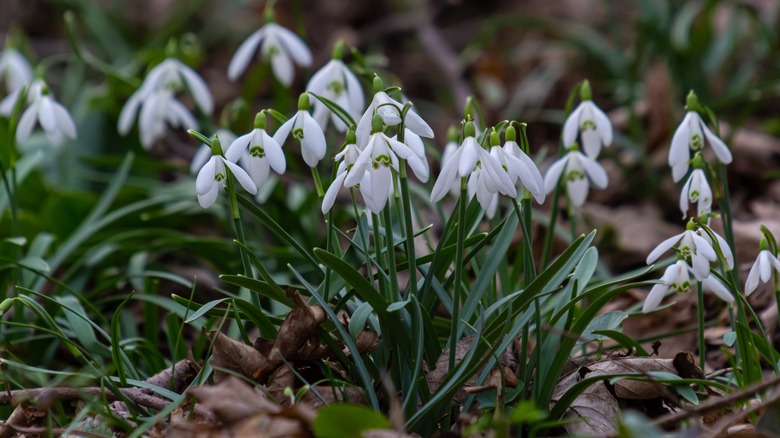
Snowdrops are one of the earliest blooming spring flowers, and get their name from their tendency to bloom while there is still a chance for snowfall. They’re a reliable harbinger of spring, and planted in clusters (they do best in partial sun), they light up the early spring landscape with their delicate but hardy white flowers. Plant these bulbs in your garden, and before long you’ll have plenty of them to blanket the ground in spring. By May, as your hostas begin to unfurl, the snowdrop foliage will have all but disappeared.
Scilla
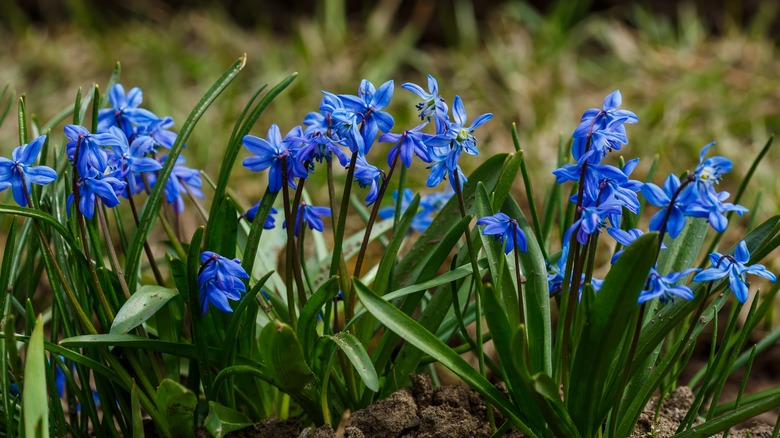
While the name “scilla” (or “squill”) refers to a number of different spring-blooming bulbs, the one many people know best is the Siberian squill (scilla siberica). It is diminutive in size, but its bright blue flowers make a huge statement in the spring garden. They naturalize readily almost anywhere and can be planted as clumps in flower beds by your hostas for vivid spots of color, and spread through your lawn to create a carpet of blue that fades before mowing season begins. These are a great choice if you love blue flowers and low-fuss spring perennials.
Crocuses
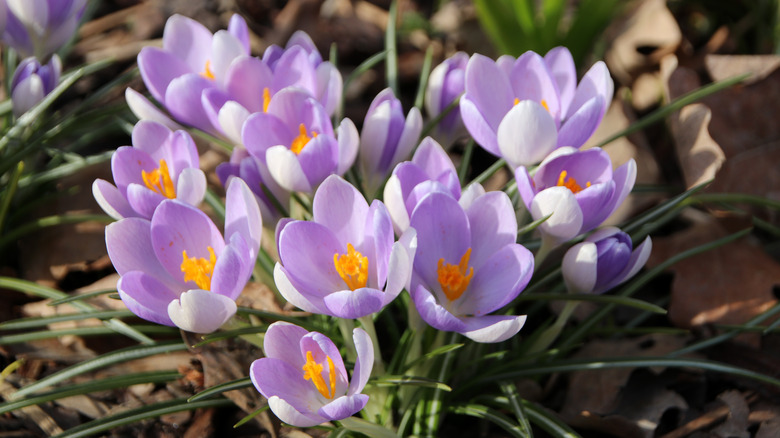
photowind/Shutterstock
Crocuses come in a number of different species, but the most familiar varieties are the spring-flowering species crocus and giant crocus. These bulbs multiply rapidly and can be planted in flower beds or across the lawn for glorious color in early spring. The slender foliage fades by mid-spring, just in time for hostas to begin growing larger. Crocuses come in a range of pastels (white, yellow, blue, lavender, and pink) and brights (deep purple and bright yellow). The flower corms — the part that is planted below ground — can be toxic if ingested by pets, so exercise appropriate caution.
Daffodils
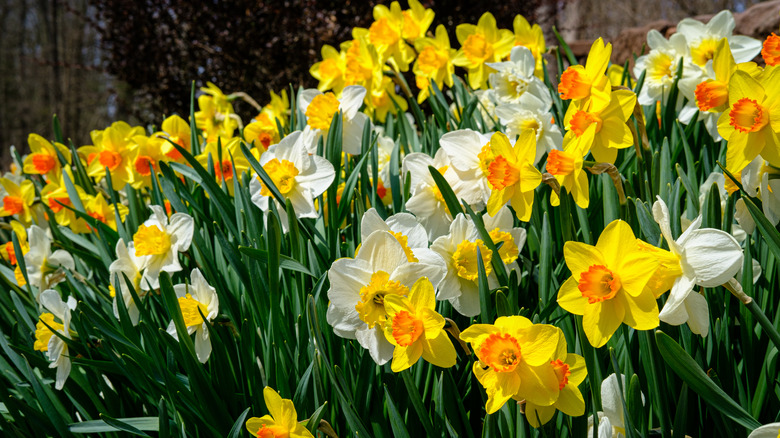
Bruce Peter/Shutterstock
Who doesn’t love daffodils? These sunny flowers brighten up spring days with their marvelous colors and frilly petals. Once established, daffodils increase each year and the clumps can be easily divided and replanted every 2-3 years. They have a range of sizes (6-inch tall miniatures to 24-inch tall trumpet daffodils) and colors (white, yellow, gold, orange, and pink), and there are thousands of cultivars. Daffodils bloom best in partial to full sun and look great planted in large drifts. Once the flowers fade the foliage soon follows, leaving room for perennials that appear later in spring, like hostas.
Grape hyacinths
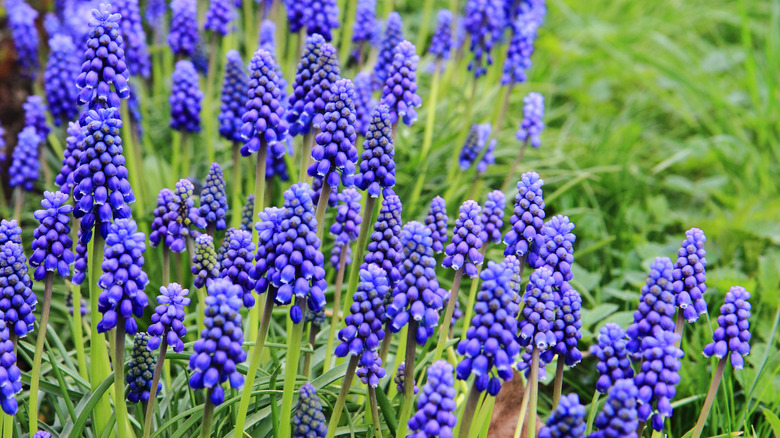
Jirik V/Shutterstock
Grape hyacinths (muscari) are small but their colorful flowers have a real impact on the spring landscape. The tiny bulbs increase fairly quickly and spread outwards, adding more beauty each year. They come in a range of colors, mostly blues from pale to dark, with some bi-colors and several white and pale pink varieties. They like a bit of sun to bloom their brightest, so plant them in front of hostas where they’ll get at least partial sun. Grape hyacinths don’t like wet soil, so be sure to plant them in a well-drained spot.
Dutch hyacinths
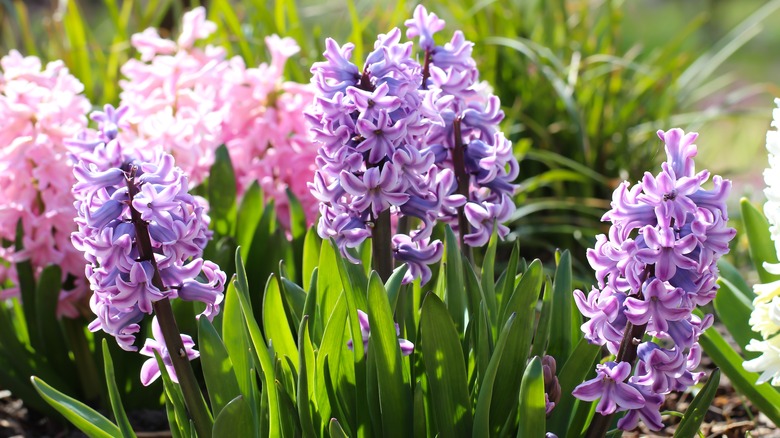
Elena Tratsevskaya/Shutterstock
Dutch hyacinths are dramatic spring-blooming flowers that are extremely fragrant. One stem of flowers can perfume an entire room, and their wisteria-like scent makes the garden smell great, too. The range of vivid colors is phenomenal, including white, a wide range of pinks, purples, and blues, as well as yellow and orange. Try planting Delft Blue (pale periwinkle blue) alongside Woodstock (deep reddish purple) and Jan Bos (hot pink) for an attention-getting display. Plant hyacinth bulbs in rich, well-drained soil where they’ll get some sun in spring. Their blooms begin to fade just as hostas are emerging.
English bluebells
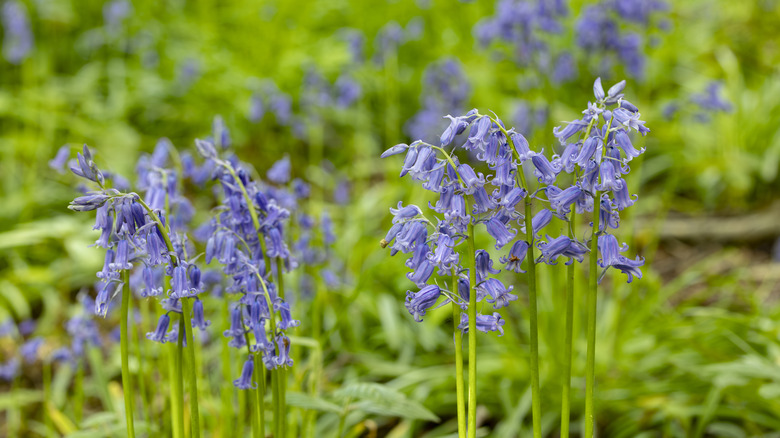
Ray Orton/Getty Images
If you do an online search for “bluebell wood,” you’ll see many photos showing magical-looking woodlands carpeted in violet-blue flowers in spring. This is bluebell season in England, where bluebells grow wild, and it’s a magical time. Fortunately, these bulbs are hardy in many other places, too, and add gorgeous color to the spring flower bed. These flowers do best in dappled sun or partial shade, and in well-drained, slightly acidic soil. They increase somewhat slowly but will spread over time. Bluebell flowers are toxic to animals and humans if ingested, so be sure to observe precautions.
Spanish bluebells
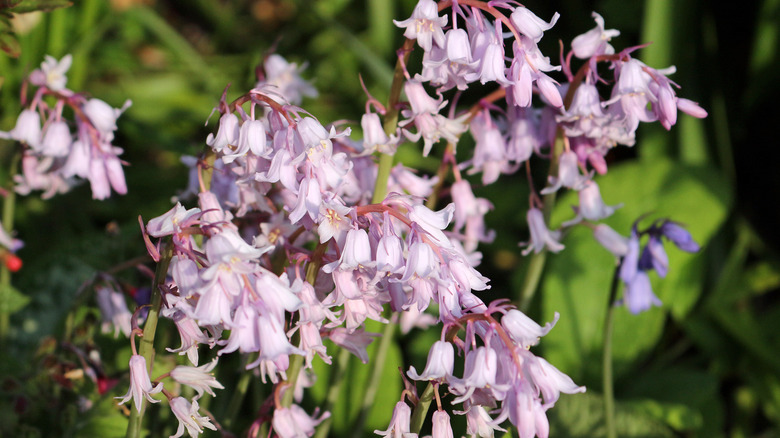
Victoria Sharratt/Shutterstock
Spanish bluebells (hyacinthoides hispanica) look very similar to English bluebells (hyacinthoides non-scripta). The flower stalks are somewhat shorter, and the flower clusters are a bit fuller. They also come in shades of pink and white in addition to blue. Spanish bluebells spread readily and unlike most bulbs that only spread from one planting, they will reseed themselves apart from their plant clusters, and in this way can become slightly invasive. They’re a good choice if you have a large area to fill, like a shady woodland garden, and their cheery bell-shaped flowers look wonderful beneath large hostas.


